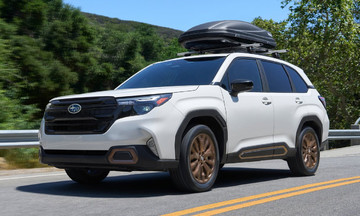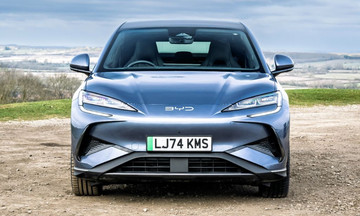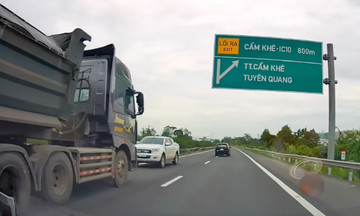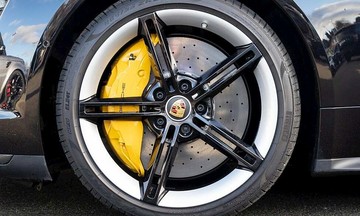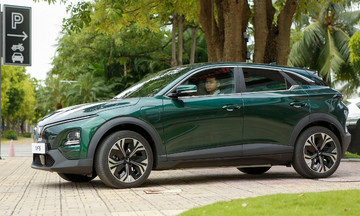To control emissions in major cities, many countries and territories around the world are implementing vehicle, fuel, and traffic management strategies. Some cities with a high proportion of motorcycles have adopted specific policies.
Indonesia, Southeast Asia's largest economy, is mitigating carbon emissions in the transportation sector by transitioning to electric vehicles, including motorcycles. Currently, over 120 million motorcycles are on the road, but the proportion of electric motorcycles is negligible.
With a goal of cutting greenhouse gas emissions by 29% by 2030, the electric vehicle strategy focuses on electrifying public buses and two-wheeled vehicles. In Indonesia, more people use motorcycles than cars, and there are also more electric motorcycle manufacturers.
In 2022, the Indonesian government set a target of 2 million electric motorcycles by 2025. Supporting policies include the 2019 regulation on accelerating the battery-powered motorcycle program for road transport and the 2022 directive on using battery-powered motorcycles as service and/or personal vehicles for central and regional government agencies.
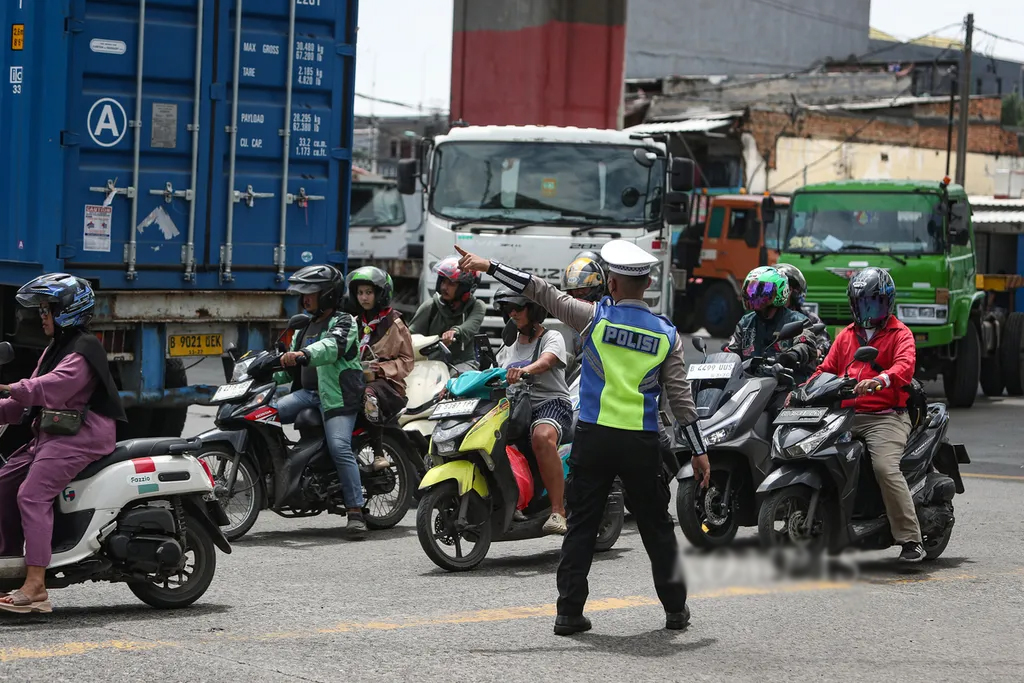 |
A police officer directing traffic in Jakarta, Indonesia, 18/4/2025. Photo: Kompas |
A police officer directing traffic in Jakarta, Indonesia, 18/4/2025. Photo: Kompas
A study by the Asian Development Bank (ADB) estimates that achieving the 2025 target for electric motorcycles requires USD 1.1 billion in subsidies, primarily for motorcycles and charging stations. However, the economic value of reduced emissions from just 2 million electric motorcycles cannot offset the cost.
Instead of subsidies, the report suggests the government should adopt a phased approach. It could start by restricting the use of fossil fuel-powered motorcycles in urban areas in 2023 and expand to rural areas, aiming to increase the number of electric motorcycles to 12 million by 2030 and 55 million by 2030. This policy targets private and commercial motorcycle users, who would only be able to enter specific areas using electric motorcycles. Additionally, ride-hailing and delivery companies could be required to "gradually increase the percentage of kilometers traveled by electric vehicles".
The study also estimates a need for around 5.5 million chargers at destinations by 2030, as well as widespread battery swapping services.
In the first half of 2025, electric motorcycle sales in Indonesia fell by 40% compared to the same period last year, due to consumer hesitation amid uncertainty about whether the government would continue to subsidize new purchases.
In China, restrictions and bans on gasoline-powered motorcycles have been implemented in major cities like Beijing since 1985, Shanghai since 2002, and Guangzhou in 2007. As in Shanghai, the implementation followed a specific roadmap over many years.
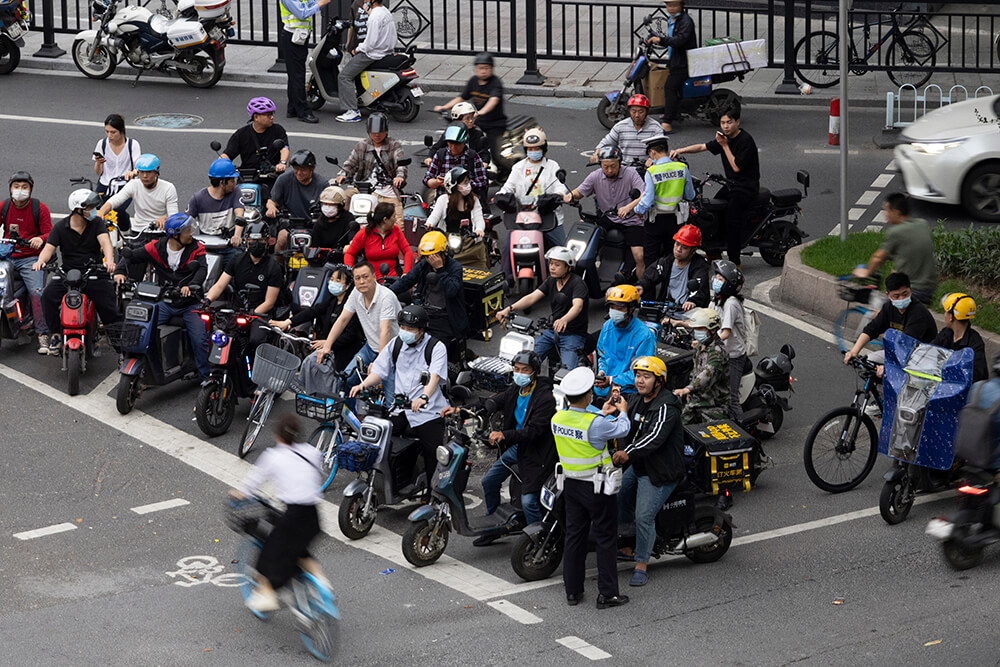 |
An intersection in Guangzhou, with many bicycles and electric motorcycles stopped at a red light. Photo: Caixin |
An intersection in Guangzhou, with many bicycles and electric motorcycles stopped at a red light. Photo: Caixin
In 1996, 500,000 gasoline motorcycles were blamed for 20% of air pollution in Shanghai. In 1997, the city stopped issuing new licenses for these vehicles, according to China Daily. In 2000, the city stopped renewing licenses for existing gasoline motorcycles, and these licenses expired in 2008.
About 190,000 gasoline motorcycles were eliminated between 2001 and 2004, replaced by 140,000 LPG-powered motorcycles by 2004, when the city had over 100 LPG filling stations.
This phased approach allowed for the gradual replacement of gasoline motorcycles with cleaner alternatives, primarily LPG-powered and electric motorcycles, to reduce air pollution in the city.
Facing significant air pollution pressure, Taiwan aims to phase out fossil fuel-powered motorcycles by 2035 and gasoline cars by 2040, according to a plan launched in late 2017, as reported by Xinhua. However, this is just a target, and there's no specific roadmap for a complete ban on fossil fuel vehicles by those deadlines.
In early 2018, Taiwan decided to install 3,310 charging stations within the next 5 years. Other incentives for switching to electric motorcycles include subsidies, special license plates, dedicated parking spaces, and parking discounts.
Motorcycle sales in Taiwan reached a high of 663,628 units in the first 10 months of 2023, up 16.9% year-on-year, but electric motorcycle sales fell 1.9% to 66,001 units. The proportion of electric motorcycles in total motorcycle sales was 12.2% in 2022. In the first 10 months of 2023, this figure was 9.9%.
Gogoro, which accounts for 70% of electric motorcycle sales, implemented promotions like 0% interest rates, but sales from January to October 2023 remained stagnant at 46,648 units, a 13.3% decrease year-on-year.
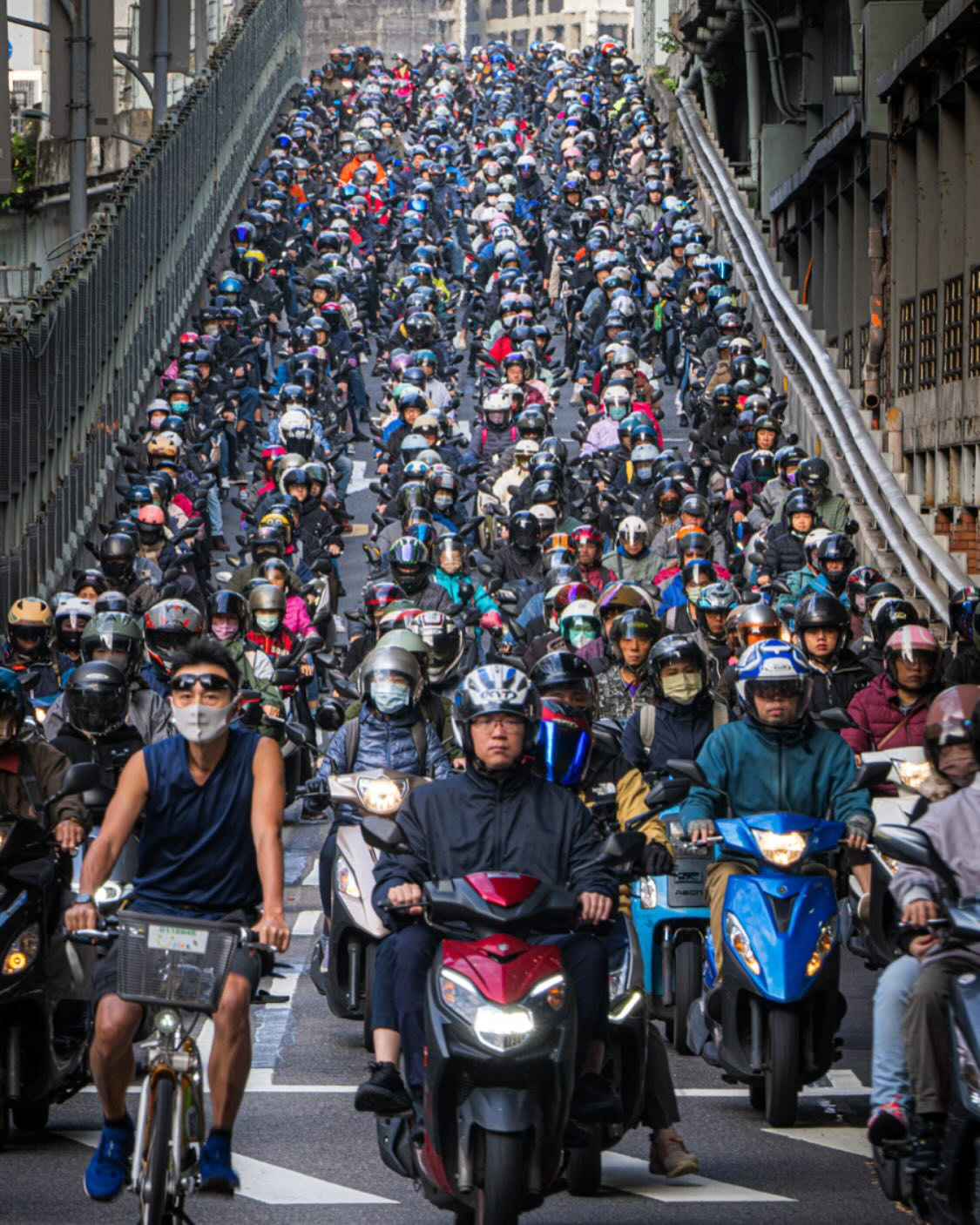 |
Hundreds of motorcycles queueing on a bridge in Datong District, Taipei, Taiwan, last March. The red light stop is just down the bridge slope, but motorcyclists still stop at the line and wait. Photo: CN Photography |
Hundreds of motorcycles queueing on a bridge in Datong District, Taipei, Taiwan, last March. The red light stop is just down the bridge slope, but motorcyclists still stop at the line and wait. Photo: CN Photography
Gogoro's bleak sales are attributed to high usage fees and the decreasing convenience of the Gogoro Network, the battery swapping system that has become standard in Taiwan. There are 7 monthly battery charging packages users can choose from based on mileage and monthly usage.
However, the cost per kilometer traveled is TWD 1.29-3.01/km, excluding TWD 0.60/km for the high-usage package. Compared to TWD 0.62/km for a gasoline motorcycle with a fuel consumption of 2 liters/100 km, this price is more than double. Also, when battery swapping demand is concentrated in certain areas and times, some users may not find available batteries. Gogoro has installed 2,580 stations and 12,464 cradles (8 or 10 battery slots), but faces the challenge of eliminating regional and temporal disparities in battery swapping demand, exceeding 400,000 swaps per day.
Meanwhile, Kymco, the operator of the Ionex battery swapping system, has expanded its number of stations to over 2,600. The company sold 11,630 electric motorcycles in the first 10 months of 2023, rapidly increasing its electric motorcycle market share from 8.3% in 2022 to 17.6%.
My Anh



